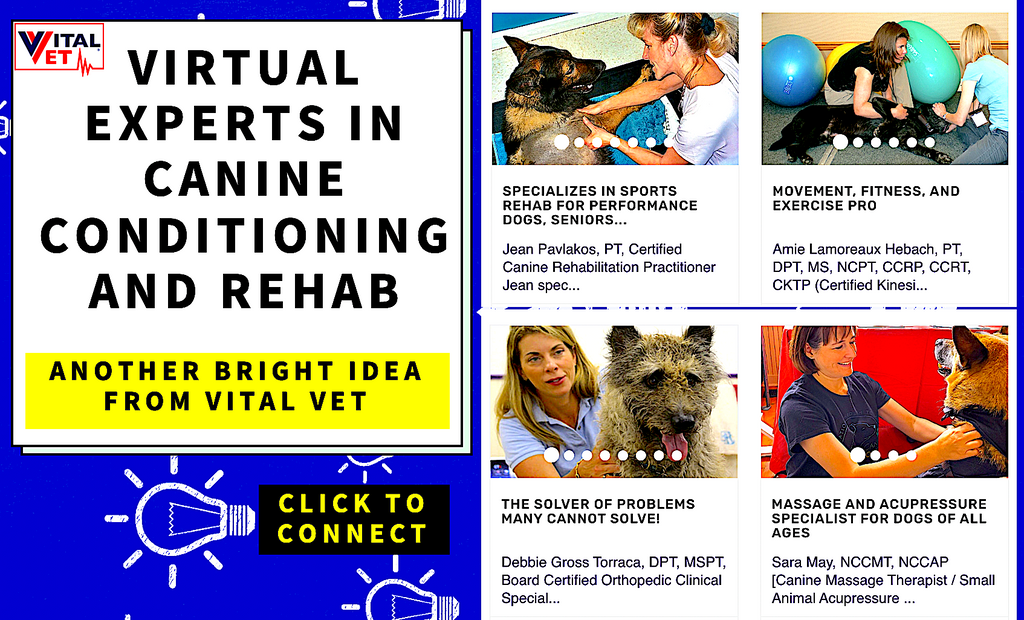
Don’t cringe! I know you probably covered S.M.A.R.T. goal setting to exhaustion as part of your training but how many of us are actually using this protocol in our daily practice and why is it important anyway?
S.M.A.R.T. is a universal protocol that we can make relevant to veterinary physiotherapy and rehabilitation. A quick google search will see countless variations of the acronym and will find it being used in engineering, business and many other sectors. I have adapted my version a few times over the years to make it relevant for the specialised practice of veterinary physiotherapy. There are many facets to our practice that the protocol needs to fit with. We are unique in that we have the extra layer of communication with the owner. An enthusiastic and dedicated owner can be a great asset but on the flip side we have all felt the pain of the non-compliant owner! S.M.A.R.T. goal setting helps us to ensure we are setting clear, easy to follow instructions and that we are able to measure and demonstrate small improvements. It helps us to manage expectations and keep owners on board and motivated.

Specific – Every goal should be specific; whether it be short, mid or long term. It should be detailed, focused, definite, tailored to the individual and exact. A specific goal contains enough detail to clearly define what you want to achieve. Anyone reading it would know exactlywhat is expected.
Measurable – The goals we set out to achieve must be measurable. A goal such as “Improve stifle flexion”, is not a clear measurable goal; “improve” must be defined. Otherwise, on your follow up visit how can you be sure that flexion has improved? Especially as the progress may be minimal. “Improve stifle flexion beyond X” is a goal that you can measure. The real value of using measurable goals is in the proof that it provides. To show an owner or another member of the team that there is a definite improvement, one that may not be obvious to the naked eye, is the key to maintaining motivation.
Attainable and Action oriented – There are many variables of this point of the protocol. Achievable, attainable, agreed upon, acceptable, appropriate. I like to focus on attainable and action oriented for the A, but actually all of the above are relevant. Is the goal within your scope of practice? Is it possible that you or/and the person carrying out the goal can achieve it? Is it within your skill set or the abilities of the owner? If the goal you set relies on the skill of the therapist, but in reality the owner is required to carry out the action on a daily basis, then this goal is not attainable. For example, to send the owner of a dog home with goal to complete an advanced mobilisation technique daily would not be appropriate or attainable. You may reason that a particular horse would benefit from some lateral work but if the rider is novice or the horse has not trained to that level, then this goal is out of reach.
The goal should also have an action attached to it. A goal without an action is meaningless. The next clear action step should always be identified. You might know where you want to get to but what are you going to DO to get there?
 Keep your eye on the ball and make goals case specific
Keep your eye on the ball and make goals case specific
Realistic – Is your goal realistic? Setting unrealistic goals just leads to disappointment and can also mean you push an animal too hard and too quickly. The questions I ask myself in relation to this point are “considering the intrinsic and extrinsic factors of this case, is my goal realistic – for this individual?” and “considering the physiological properties of the tissues involved and the speed at which they can repair and adapt, is this goal realistic?”. These two questions will help you to find the realistic sweet spot. Use this information to help you manage owner expectations.
Timed – There are various aspects of time to consider in the context of goal setting for physical rehabilitation. For our short and mid term goals we need to consider duration (how long the sessions or sets are) and frequency (how often the sessions or sets are carried out). We must also consider the longer term time frames. A question that can be difficult to answer is “how long will it take for him to get better?”. What is better? This is subjective. The owner’s ‘better” and your “better” are most likely not aligned. Again, expectations should be aired and discussed. We can plot a desirable long term goal of “return to full function by X” and we can add mid term markers along the way to measure progression, but the owner must understand that these are on a sliding scale. We can provide no guarantees. Each goal should have a time attached to it and frequency and duration should clear. For example, carry out lead exercise, in walk for five minutes, three times a day.
The Instruction Manual
We should think about using S.M.A.R.T. goal setting to provide a clear instruction manual for the case. If you work in a clinic setting, any member of the team should be able to pick up your ‘instruction manual’ for a particular case and therefore, pick up treatment and deliver it in line with your specifications. I recently took students for a day placement at Woozelbears Hydrotherapy centre in Swindon, where they have a robust record system in place. Each case has goals set, and measures against these goals recorded during each session. During team meetings, it is easy to discuss any case with the whole team in relation to the progress towards the individual patients goals. Also, any member of the team can work with a case, in the knowledge that they have specific instructions to follow with goals providing the necessary direction. The video below shows Gerrard on the water treadmill; he has bilateral hip dysplasia and spondylosis. He is managed with hydrotherapy and laser and the goals for his treatment are very clear.
Check your goals are S.M.A.R.T.
Check your goals are smart by asking yourself these simple questions:
- Is it specific? Y/N?
- Can I measure it? Y/N?
- Are my action points attainable? Y/N?
- Is it realistic for this case? Y/N?
-
Are the timings clear? Y/N?
Your challenge
Challenge yourself to set some S.M.A.R.T. goals for one of your cases this week. Or if you already use this protocol, analyze some past plans and check that the goals are S.M.A.R.T. Use this system as a framework to help you in developing your rehabilitation programs and we would love to hear from you in the comments with any questions.
At Justo Development we run CPD courses in Canine and Equine Exercise Rehabilitation and a variety of bitesized CPD courses in topics related to Veterinary Physiotherapy and Rehabilitation.
Reference: Katie Lawrence
Link: https://www.justodevelopment.com/are-you-being-s-m-a-r-t-with-your-rehabilitation-goals/



